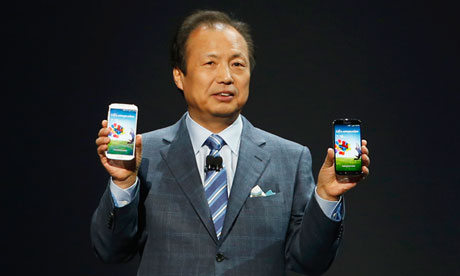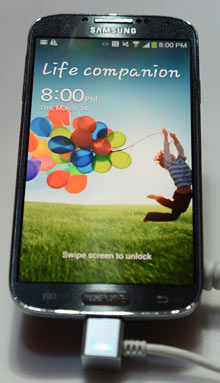What Advocacy Means to Me--Perspectives from PALS about going to Capitol Hill
Advocacy als mndreprinted from Pathways Newsletter, ALS Association Greater Philadelphia Chapter Spring 2011
Have you considered becoming an ALS Advocate? Join hundreds of people from across the country on May 8-11, 2013 at the National ALS Advocacy Day and Public Policy Conference in Washington DC, and see for yourself the difference you can make in the ALS community!
The conference includes breakout sessions about research and other issues affecting people with ALS, and culminates in a Day on the Hill, where we meet with our members of Congress to share the ALS message and enlist their help with legislation to improve the lives of those living with this disease.
For more information or to register, visit http://www.alsa.org/advocacy/advocacy-day
Here’s what others are saying about becoming an ALS Advocate:
Advocacy doesn‟t require skill or a huge time commitment. The only knowledge you need is the personal experience you have had living with the disease. Advocacy may seem intimidating at first, but once you have faced a diagnosis of ALS, nothing can ever truly frighten you again.
– Jayne Cawthern, Boalsburg, PA
Being the "face of ALS" to our Congressman and Senators has been a really positive experience for me and my wife. We've had the opportunity to support the ALS Registry Act , increased federal funding for ALS specific research through the National Institute of Health and increased funding for research through the Department of Defense. It is truly empowering to help our elected officials understand how ALS impacts PALS and their families.–Keith Canady, Wilmington, DE
We are keenly aware of how uplifting it has been to meet with ALS people from all over our country, joined in an incredible effort to clearly present our special needs to Congressional representatives. No matter how cynical you might be about our ability to have any impact, you first notice that the Senators, Representatives and their staffs with whom you meet do listen and try to understand.–Kathryn & Gerry Voit, Cheltenham, PA
Spending a day moving between the offices on Capitol Hill is an excellent way to get to know more people involved with the fight against ALS. It is good to know that we are not alone and there are so many people working every day in the effort to find a cure and to treat ALS patients.–Stephen Potter, West Chester, PA
I was empowered by the experience of going with others to congressional offices to advocate for ALS. It was fascinating to learn so much about how government works and gratifying to realize that I was having an impact on getting research money for ALS. And throughout all these activities, I was moved by the kindness and solidarity of the ALS community - patients and their families, medical caregivers and researchers; I heard so many stories and made so many friends.– Mary McConaghy, Philadelphia, PA
I went to Washington to let our Congressional representatives hear about my experience as an ALS patient. Getting additional funding for research and also the National ALS Registry, will provide much needed research data that will help all ALS patients. Our representatives were very receptive to our needs, and willing to help in our efforts.
– Arlene Gordon, Downingtown, PA
Being involved with Advocacy work for the ALS Association gives me the opportunity to give back to an organization that was a lifeline when my best friend struggled with her battle with ALS.– Maureen McPeak, Carlisle, PA
One of the frustrating things about being diagnosed with ALS is the feeling that there's nothing that can be done about it. However, I've found that participating in advocacy can be a way to do something about a situation that nothing can be done about. Through state and national advocacy efforts, I've been able to make a tangible difference in the fight against ALS.– Wes Rose, Glenside, PA
Have you considered becoming an ALS Advocate? Join hundreds of people from across the country on May 8-11, 2013 at the National ALS Advocacy Day and Public Policy Conference in Washington DC, and see for yourself the difference you can make in the ALS community!
The conference includes breakout sessions about research and other issues affecting people with ALS, and culminates in a Day on the Hill, where we meet with our members of Congress to share the ALS message and enlist their help with legislation to improve the lives of those living with this disease.
For more information or to register, visit http://www.alsa.org/advocacy/advocacy-day
Here’s what others are saying about becoming an ALS Advocate:
Advocacy doesn‟t require skill or a huge time commitment. The only knowledge you need is the personal experience you have had living with the disease. Advocacy may seem intimidating at first, but once you have faced a diagnosis of ALS, nothing can ever truly frighten you again.
– Jayne Cawthern, Boalsburg, PA
Being the "face of ALS" to our Congressman and Senators has been a really positive experience for me and my wife. We've had the opportunity to support the ALS Registry Act , increased federal funding for ALS specific research through the National Institute of Health and increased funding for research through the Department of Defense. It is truly empowering to help our elected officials understand how ALS impacts PALS and their families.–Keith Canady, Wilmington, DE
We are keenly aware of how uplifting it has been to meet with ALS people from all over our country, joined in an incredible effort to clearly present our special needs to Congressional representatives. No matter how cynical you might be about our ability to have any impact, you first notice that the Senators, Representatives and their staffs with whom you meet do listen and try to understand.–Kathryn & Gerry Voit, Cheltenham, PA
Spending a day moving between the offices on Capitol Hill is an excellent way to get to know more people involved with the fight against ALS. It is good to know that we are not alone and there are so many people working every day in the effort to find a cure and to treat ALS patients.–Stephen Potter, West Chester, PA
I was empowered by the experience of going with others to congressional offices to advocate for ALS. It was fascinating to learn so much about how government works and gratifying to realize that I was having an impact on getting research money for ALS. And throughout all these activities, I was moved by the kindness and solidarity of the ALS community - patients and their families, medical caregivers and researchers; I heard so many stories and made so many friends.– Mary McConaghy, Philadelphia, PA
I went to Washington to let our Congressional representatives hear about my experience as an ALS patient. Getting additional funding for research and also the National ALS Registry, will provide much needed research data that will help all ALS patients. Our representatives were very receptive to our needs, and willing to help in our efforts.
– Arlene Gordon, Downingtown, PA
Being involved with Advocacy work for the ALS Association gives me the opportunity to give back to an organization that was a lifeline when my best friend struggled with her battle with ALS.– Maureen McPeak, Carlisle, PA
One of the frustrating things about being diagnosed with ALS is the feeling that there's nothing that can be done about it. However, I've found that participating in advocacy can be a way to do something about a situation that nothing can be done about. Through state and national advocacy efforts, I've been able to make a tangible difference in the fight against ALS.– Wes Rose, Glenside, PA
















